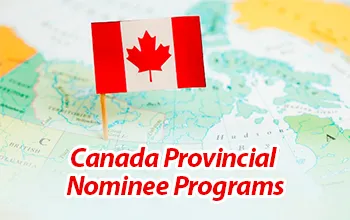If you’re planning to make Canada your permanent home, then Express Entry is one of the fastest and most popular ways to get there. It’s designed for skilled workers who want to immigrate based on their qualifications and work experience. Sound like you? Let’s dive into the step-by-step guide on how to crack the Express Entry system.
First Click Here to Check if You Qualify to Travel to Canada
Why Choose Express Entry?
It’s quick, efficient, and entirely online. Unlike other immigration routes that can take years, Express Entry processes applications within 6–8 months. Plus, it’s transparent and gives you control over your application.
Who is Express Entry For?
-
Skilled professionals
-
Trade workers
-
People with Canadian work experience
-
International students who have graduated in Canada
-
Applicants with job offers or provincial nominations
Read:
- Canada Visa Application: Apply Here
- UK VISA SPONSORSHIP JOBS AND HOW TO APPLY
- Remote Nursing Jobs in Canada: Opportunities, Roles, and Insights
What is the Express Entry System?
Overview
Launched in 2015, Express Entry is an online immigration system used by the Canadian government to manage permanent residence applications from skilled workers.
Federal Programs Managed Under Express Entry
Federal Skilled Worker Program (FSWP)
For professionals with foreign work experience and post-secondary education.
Federal Skilled Trades Program (FSTP)
For skilled trade workers in occupations like carpentry, plumbing, and welding.
Canadian Experience Class (CEC)
For those with at least one year of skilled work experience in Canada.
Express Entry Eligibility Requirements
Minimum Requirements
-
At least 1 year of skilled work experience
-
Language test results (IELTS/CELPIP/TEF)
-
Educational credential assessment (ECA)
-
Proof of funds (unless you have a valid job offer)
Education Assessment (ECA)
If your education was completed outside Canada, you must get an ECA to prove your degree is equivalent to Canadian standards. You can use agencies like WES or ICAS.
Language Proficiency
Accepted tests:
-
IELTS General (English)
-
CELPIP (English)
-
TEF (French)
Minimum required scores depend on the program, but a CLB 7 or higher is ideal for FSWP.
Proof of Funds
Unless you’re working in Canada or have a valid job offer, you’ll need to show you can support yourself:
-
1 person: ~$13,757 CAD
-
2 people: ~$17,127 CAD
-
Increases with family size
Admissibility Requirements
You must be legally admissible to Canada. That means no serious criminal record, no health threats, and no immigration bans.
How the Express Entry Process Works
Step 1: Check Eligibility
Use this free tool:
???? IRCC Eligibility Tool
Step 2: Gather Documents
-
Passport
-
ECA report
-
Language test results
-
Work experience letters
-
Police certificates
-
Proof of funds
Step 3: Create Your Express Entry Profile
Go to the IRCC portal and set up your online profile:
???? IRCC Portal
Step 4: Get CRS Score
Your profile is scored using the Comprehensive Ranking System. You’ll get points based on:
-
Age
-
Education
-
Work experience
-
Language skills
-
Job offer or nomination
Step 5: Enter the Express Entry Pool
Once submitted, your profile enters the candidate pool. Now you wait for a draw.
Step 6: Receive an Invitation to Apply (ITA)
If your score is high enough, you’ll get an ITA. This is when things get real—you now have 60 days to apply for PR.
Step 7: Submit Permanent Residence Application
Upload all required documents, pay the fees, and hit submit. Wait for final approval.
Comprehensive Ranking System (CRS) Explained
How Points are Calculated
Maximum CRS score is 1,200:
-
Core Human Capital: 500 points
-
Spouse Factors: 40 points
-
Skill Transferability: 100 points
-
Job Offer/PNP: Up to 600 points
Factors That Affect Your Score
-
Younger applicants score higher
-
Higher education = more points
-
Excellent language skills give a big boost
-
Provincial nomination adds 600 points instantly
Tips to Improve CRS Score
-
Retake IELTS for better scores
-
Gain more work experience
-
Get a job offer from a Canadian employer
-
Apply through a PNP
Required Documents for Express Entry
Before Profile Submission
-
Language test results
-
ECA report
-
Travel documents
After Receiving ITA
-
Police clearance
-
Medical exam
-
Proof of funds
-
Employment records
Application Fees and Costs
-
Express Entry application: $1,365 CAD per adult
-
Biometrics: $85 CAD
-
ECA fee (WES): ~$220 CAD
-
IELTS exam: ~$300 CAD
Processing Time for Express Entry
Standard processing time is 6–8 months after submission of your full PR application.
Job Bank and Provincial Nominee Program (PNP)
Linking to Job Bank
Once you create your profile, you can link it to the Job Bank and connect with employers.
Getting a Provincial Nomination
Apply for PNP separately. If accepted, it adds 600 points to your CRS score—almost guaranteeing an ITA.
Express Entry Draws
How Often Are Draws Held?
Typically every 2 weeks. IRCC releases a minimum CRS score and invites candidates above that threshold.
Minimum CRS Score Trends
Scores range from 470 to 520+ depending on draw type. Keep an eye on:
???? Latest Express Entry Draws
Mistakes to Avoid in Express Entry Application
-
Misreporting work experience
-
Submitting expired documents
-
Skipping optional documents
-
Forgetting to update profile with changes
What Happens After You Get PR?
Once approved, you’ll receive a Confirmation of Permanent Residence (COPR) and a visa to enter Canada. On arrival, show your documents and become a permanent resident!
Conclusion
Canada’s Express Entry is one of the fastest immigration pathways in the world. With proper planning, accurate documents, and a bit of patience, your dream to live in Canada can come true. Don’t wait—start building your profile today and boost your chances to receive an ITA in the next draw!
FAQs
1. Can I apply to Express Entry without a job offer?
Yes! A job offer helps but is not mandatory.
2. What’s a good CRS score to get selected?
Generally 470+, but this varies with each draw.
3. Is Express Entry the only way to get PR in Canada?
No, there are other routes like PNP, Family Sponsorship, and Quebec programs.
4. Can I edit my profile after submitting it?
Yes, but only before receiving an ITA.
5. How many times can I apply if rejected?
You can update and resubmit your profile as many times as needed.







